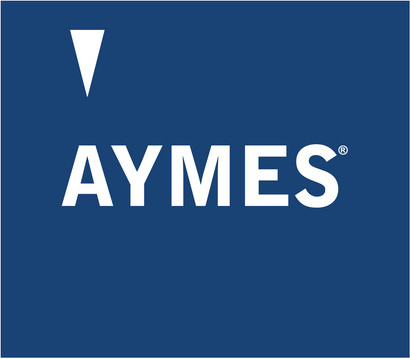Adequate nutrition and healthy growth in the first 1,000 days of life contribute to long-term health benefits in later life.1 Additionally, dietary intake in children is closely associated with growth, motor and neurodevelopment, and cognitive function. Therefore, optimising nutritional intake to ensure growth and cognitive potential are achieved are important aspects of paediatric dietetics.2
Research has shown that the use of oral nutritional supplements (ONS) in paediatrics can lead to improved nutrient intake, driving catch-up growth and optimising growth parameters.3 Furthermore, appropriate nutritional interventions play an important role in preventing and managing undernutrition amongst infants and can promote catch-up growth into adolescence.4 However, ONS is only effective if it’s taken, and non-compliance is a barrier to effectiveness. In this article, Paediatric Dietitian Lucy Upton provides clinical insight into tailoring nutrition support advice to suit the varying needs of paediatric patients to optimise ONS compliance.
Patient 1
| Gender |
Male |
| Age |
3 years |
| Medical History |
Deaf, nocturnal vomiting, reflux as an infant |
| Anthropometry |
Weight fell from 50th centile to 9-25th centile (between 12-16 months) |
| Diagnosis |
Paediatric feeding disorder with sensory processing difficulties and interruption to critical learning periods for feeding |
Background
This child was referred due to oral aversion with an extremely limited diet (e.g., accepting less than five foods over the past two years). He was dependant on ONS to meet nutritional requirements for growth and development.
A feeding history revealed that the child was initially breast-fed with adequate growth. There was significant difficulty with complementary feeding progression at eight months old. His parents reported food refusal alongside stressful and challenging mealtimes. Initially the child accepted a limited range of foods, however from 12 months, this decreased to six ‘safe’ foods (cereal, toast, yoghurt/milk, and dissolvable baby snacks).
Dietetic intervention
The child was prescribed one bottle of a neutral-flavoured ONS to support catch-up weight gain (towards the 50th centile) and meet micronutrient requirements.
Outcomes
The child achieved the target catch-up growth. His height and weight continued to track along the 50th centile. ONS provided a nutritional ‘safety blanket’ while engaging with feeding therapy.
Discussion
The child’s parents reported that “ONS are providing a ‘lifeline’ of critical energy and nutrients that my child needs.” The parents valued dietetic education on how to incorporate ONS into their routine. It was important that expectations of ONS were clarified from the start, including a timeline for use and a contingency plan if ONS were refused.
This child benefitted from an energy-dense, low volume supplement, which is supported by research.5 In view of the child’s age, the target volume was split into two doses to support appetite regulation. The parents were advised to decant ONS into an age-appropriate cup and set clear boundaries with regards to when and where it was served.
Patient 2
| Gender |
Female |
| Age |
6 years |
| Medical History |
Reflux as an infant, since resolved. Anxious disposition |
| Anthropometry |
BMI < 2nd centile |
| Diagnosis |
Low weight; BMI < 2nd centile |
Background
This child was referred for assessment secondary to concerns regarding low weight. On assessment, a feeding history revealed that she maintained a regular routine of meals and snacks, however she experienced early satiety. A lack of awareness of hunger cues contributed to age-appropriate food refusal and reluctant behaviours at mealtimes. Despite this, her diet included a good range of foods. The child’s sensory preferences steered towards hard and crunchy foods e.g., raw vegetables, and crackers.
Dietetic intervention
Food fortification advice was given to optimise nutritional intake. The child took part in an ONS taste test to encourage compliance. She was prescribed one to two ONS daily. ONS was given with breakfast and before bed to reduce the impact on satiation at meal times.
Parental reassurance was provided to emphasise that it was not the fault of parents. Expectations were managed regarding the efficacy of ONS in promoting catch-up growth. The parents were given a timeline for use and advised on the process of weaning off ONS.
Outcomes
ONS were used for 18-months, resulting in an improvement in Body Mass Index (BMI) towards the 9th centile. The child was gradually weaned from ONS successfully.
Discussion
As outlined in the Division of Responsibility in Feeding Model, it is the role of the parents to decide the timing and quantity of ONS given.6 Given the child’s age, it was important to explain to her the rationale for using ONS. The parents and dietitian worked together to find a motivating factor to help the child accept the ONS. Her interest in swimming guided a conversation around the role of ONS in providing energy for swimming. Taste fatigue was minimised by adding ingredients (e.g., fruit, sugar-free syrups) to provide a variety of flavours.
Patient 3
| Gender |
Male |
| Age |
16 years |
| Medical History |
Attention deficit hyperactivity disorder (ADHD), delayed puberty, suspected hypermobility with episodes of idiopathic pain |
| Anthropometry |
Weight: 43.5 kg (< 0.4th centile)
Height: 1.72 cm (25th centile)
BMI: 14.7 kg/m2 |
| Diagnosis |
Poor appetite with low weight and BMI |
Background
This teenager was meeting 60-70% of his nutritional requirements. He reported that medication to help manage his ADHD supressed his appetite, leaving a window of three hours in the evening when he would be ‘starving.’
Dietetic intervention
Advice was given regarding suitable high-energy, ‘grab-and-go’ style snacks. High-energy, low volume ONS were prescribed (taken as shots) to replicate a similar approach to taking medications. It was advised to have one bottle of ONS (milkshake style) throughout the school day.
Outcomes
The young male maintained good compliance with ONS. He initially reported nausea post ONS, however splitting the dose helped to resolve symptoms. Dietetic intervention resulted in a 1 kg weight gain over six weeks.
Discussion
His parents were conflicted with supporting their child’s independence, while managing concerns about his reduced dietary intake. ONS provided them with reassurance that a proportion of their child’s micronutrient requirements were met.
Motivating factors were explored as dietary changes and ONS acceptance need to be initiated by older children. The teenager expressed ‘wanting to be heavier’ as he felt different from his peers. Barriers to compliance were overcome by decanting ONS into his own drinks bottle and setting phone alarms as a reminder to take his ONS throughout the day.
- ◄References:
-
- Black M, Pérez-Escamilla R & Rao SF. (2015). Integrating Nutrition and Child Development Interventions: Scientific Basis, Evidence of Impact, and Implementation Considerations. Adv Nutr.; 6(6): 852.
- Zhang Z, et al. (2021). Effect of oral nutritional supplementation on growth in children with undernutrition: A systematic review and meta‐analysis. Nutrients.; 13(9).
- Huynh D, et al. (2015). Longitudinal growth and health outcomes in nutritionally at-risk children who received long-term nutritional intervention. J Hum Nutr Diet.; 28(6): 623–35.
- Georgiadis A & Penny M. (2017). Child undernutrition: opportunities beyond the first 1000 days. Lancet Public Health.; 2(9): 399.
- Hubbard G, et al. (2020). Energy-dense, low-volume paediatric oral nutritional supplements improve total nutrient intake and increase growth in paediatric patients requiring nutritional support: results of a randomised controlled pilot trial. Eur. J. Pediatr.; 179(9): 1421–30.
- The Ellyn Satter Institute (2019). The Satter Division of Responsibility in Feeding. Accessed online: www.ellynsatterinstitute.org/how-to-feed/the-division-of-responsibility-in-feeding// (Dec 2021).


